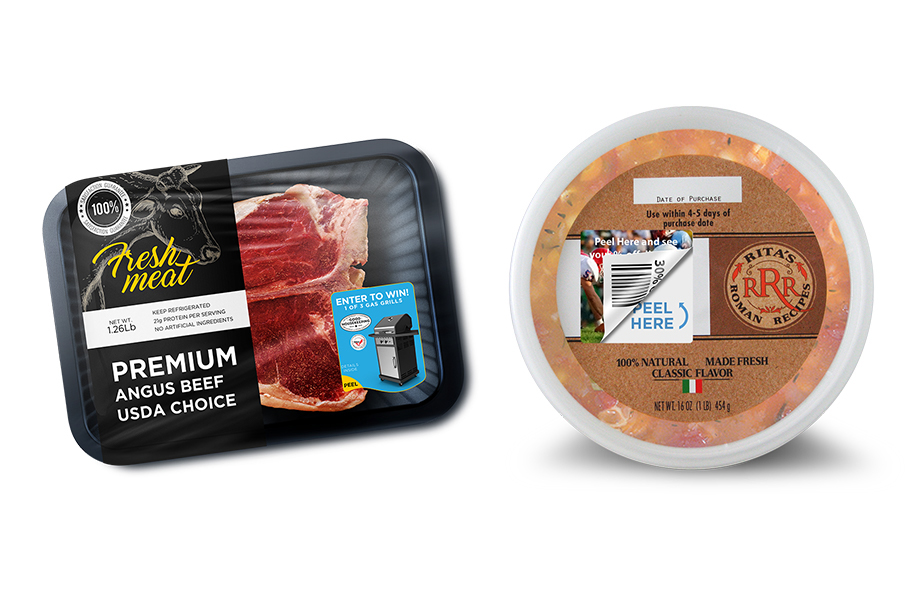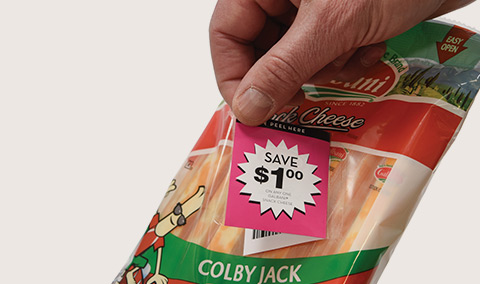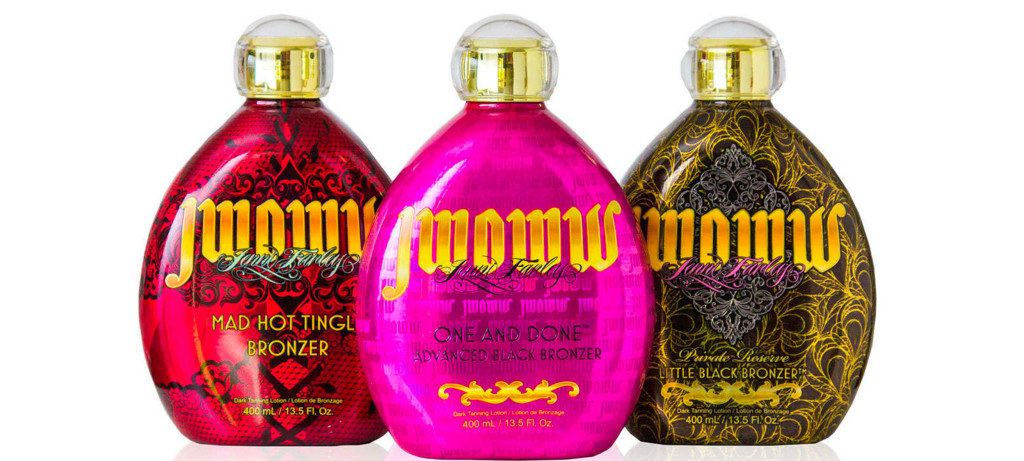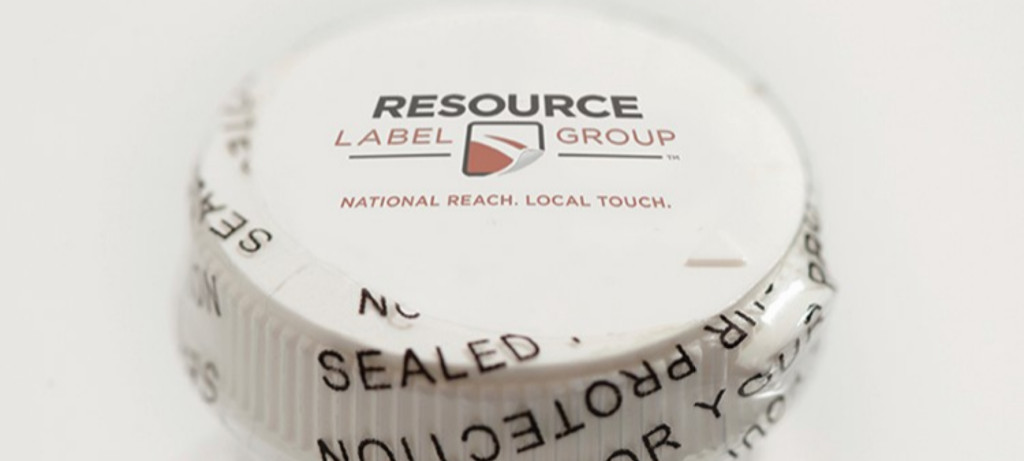Instant redeemable coupon (IRC) labels: Five tips for success

If you’ve ever peeled off a coupon in-store for on-the-spot savings, you’ve engaged with an instant redeemable coupon (IRC) label. These little bonus labels can incentivize shoppers to choose your brand over competitors, especially as economic uncertainty looms.
IRCs falls under the umbrella of promotional labels, and their simplicity makes them easy for consumers to peel off and redeem during check-out. Executed properly, they’ll help your food, beverage, household and consumer products, nutraceuticals, or beauty and personal care products stand out and fly off the shelves.
But getting these little labels right isn’t easy — and brands must also navigate issues like smaller print runs, retailer sizing requirements and combatting counterfeiters.
By partnering with a skilled label provider, you’ll get custom IRC label guidance in five key areas:
- Engineering to spec — Early planning is key to ensuring your IRC label suits your product’s unique packaging needs.
- Learning to navigate industry-specific rules — A brief overview of clearinghouses and what you need to know.
- Anti-counterfeiting measures — Outsmart fraudsters with authentication techniques that only a label expert can develop.
- Developing “just right” design strategies — From straightforward cross-promotions to QR codes that drive consumer engagement, your label partner will help you brainstorm and land on ideas that suit your brand.
- Pricing, planning and logistics — The surprising ways your label partner should help you uncover cost efficiencies, print-and-ship strategies and even supply chain tactics.
Do you already know what you want? Resource Label Group understands the intricacies of IRC labels, and we’re committed to getting them right.
Get a quote now
For problem-free IRC label performance, plan early
If one of your IRC labels falls off before shoppers get the chance to use it, you risk losing a sale. With that in mind, your IRC must do two things:
- Adhere properly to your package, from shipping to point-of-sale.
- Be easily separated from the package by the customer during the redemption process.
Your IRC label must be designed with package compatibility in mind — and that requires collaborating with your label partner early and often.
How are IRC labels made?
The most common construction for a standard IRC label utilizes three panels:
- The base label — This is the clear “leave behind” label that adheres to your packaging. It serves as the substrate that transfers the paper coupon.
- The double-sided folded paper piece — Your coupon will be printed onto this part of the label. The fold creates a front and back piece to offer extra real estate for anti-counterfeiting, extended content and full-color images.
Sounds simple, right? Not so fast. Every brand’s packaging is different. Whether you’re using a glass bottle, a corrugated box, a thin plastic film over meat products or something else, every surface presents differing tensions, which means they’ll all react differently to the IRC label’s adhesive.
Loop in your label provider early to discuss packaging and adhesive compatibility.
During these conversations, be prepared to answer questions like:
- How do you want this to “work” on your package?
- What size do you think your piece should be?
- Will your product be frozen, chilled or shelf-stable?
- Do you need a universal IRC that works across multiple product lines?
- Can you describe your container’s shape, size, radius and material?
Your label needs to withstand every challenge it may encounter, from excessive moisture to heat to sunlight and more. These conversations ensure that your label provider manufactures an IRC coupon that won’t cover your brand, flag, fall off or become susceptible to other label performance issues.
Related reading: How to fix common label application problems.
When and how to work with clearinghouses
If your brand has never launched an in-store promotion with IRC labels before, you may be surprised to learn that your label partner can’t provide the barcodes needed for retailers to scan your coupons. To obtain those, you need to work with a clearinghouse.
What exactly is a coupon clearinghouse?
IRC labels involve four participants: brands, consumers, retailers and clearinghouses.
Brands supply the labels for in-store consumer redemption, then retailers send them to clearinghouses for reimbursement. After sorting and reviewing for authenticity, the manufacturer and/or retailer will receive an invoice from the clearinghouse.
When should I contact a clearinghouse?
In short, before progressing too far along the label production process.
Every IRC label needs a barcode and sector-specific legal statements that only your clearinghouse can provide. That process usually takes just a few weeks. Once you have both in hand, your label provider can integrate these elements seamlessly into the rest of your IRC coupon.
Which clearinghouse is right for my brand?
A skilled label provider should have strong industry relationships with reputable clearinghouses. Ask them to recommend an experienced clearinghouse that uses industry best practices and leading technology.

How to outsmart coupon fraudsters
Many brands believe that no coupon is more effective than an IRC label. Consumers want the best value, period. And the allure of saving money can make or break a sale.
But some take it a step too far. In fact, one Virginia Beach couple recently pled guilty to a coupon scam that deprived retailers and manufacturers of more than $31 million. Their counterfeits often reduced prices and appeared indistinguishable from authentic ones.
Such fraudsters don’t just rob money from a purchase — their presence endangers the trust between retailers and your brand. If your IRC labels are easy to counterfeit, you may lose vital sales outlets.
To stay a step ahead of malicious actors, your label partner may advise the following:
- Variable data printing — This adds unique product identifiers to each coupon to prevent counterfeits from infiltrating the market.
- Overt design details — Embellishments, metallics, die-cuts and specialty shading build a unique brand ‘signature’ that’s harder to mimic.
- Consolidated SKUs — As security elements increase, you can maximize cost-efficiency by running multiple SKUs at a time.
- Clearinghouse-approved holographics — Some clearinghouses have anti-counterfeit cold foils that require licensing agreements for label providers to use. Once applied and redeemed, clearinghouses can verify coupon authenticity.
Don’t let counterfeiting ruin your hard-earned brand reputation. Your label partner should offer discrete, thoughtful guidance and the capabilities to protect your business. And if you’re interested in joining the fight against counterfeit coupons, consider becoming a member of The Coupon Information Corporation (CIC), a not-for-profit industry watchdog dedicated to promoting coupon best practices.
Related reading: How innovative label engineering helps this brand stay a step ahead of scams.
The secret to differentiating from competitors
Anyone can print a label… but you need more than that. With Resource Label Group, you get a partner. Our process starts with a complimentary consultation to explore every material and design option that may meet your needs. Our goal? To set your brand apart and improve your bottom line.
Designed to sell your products
If you specialize in perishable products, you lose money when they expire on the shelves. But buyers are more likely to purchase discounted items, and IRC labels can help make that happen — saving revenue that would otherwise be lost. They’re also effective in reducing overstocked inventories.
Your label partner can help you brainstorm IRC design frameworks that:
- Inspire impulse shopping — We all know the feeling when you leave the store with a purchase you hadn’t planned on. By tapping into the desire for a “deal,” you’ll drive sales opportunities.
- Encourage extra purchases — Buy one, get one is a reliable tactic for good reason. IRC labels make it easy for you to supply discounts that reward multiple purchases.
- Cross-promote related products — Using IRC labels to promote multiple products from similar lines. For example, salsa shoppers could be motivated to purchase both mild and spicy varieties if incentivized by a coupon.
- Drive consumer engagement — Clever QR code use encourages shoppers to interact with your product, especially when it leads them to mobile content like coupons, augmented reality experiences and social media challenges.
- Seamlessly integrate into your existing branding — Some brands want their IRCs to stand out, but others fear diminishing their main label. Here’s how one brand avoided the well-worn approach of placing IRCs directly on their packaging.
You can also use IRC label design consultations with your provider to discuss your primary label’s overall effectiveness and opportunities for enhancement.
“Design can impact costs. Some brands just want coupons that help product move and deliver messages like, ‘Save 50 cents.’ Others want a premium piece that actually conveys the value of the brand. One organic milk brand we’ve worked with always had very nice IRCs that were offset-printed and had beauty shots. When you opened them up, they had several panels of branding information and only the back side had the barcode and legal information.”
Aaron Kilgore, Regional Vice President for Resource Label Group
IRC label costs, shipping and logistics
Design complexity typically drives costs up. But how much do IRC label cost, in general? Unfortunately, there’s never a clear answer to questions about price when it comes to any kind of label because so many factors can influence that final invoice.
A good label partner will work with you to find other opportunities to save. This might look like:
- Exploring other print technology — Choose from flexographic, digital or digital impact. Digital printing is an ideal solution for short-run IRCs on smaller budgets.
- Reconsidering finishes and embellishments — While design complexity can drive up costs, alternative techniques may achieve the look you want while saving on spend.
- Scheduling regular label spend audits — Ongoing audits help you evaluate print technologies and inventory management options as your needs shift.
The impulse to approach your IRC procurement with price at the forefront is understandable, but this may shortchange you of your long-term goals. That’s why you need a label provider who isn’t just a printer, but a partner.
A little label with big lift
Don’t let the deceptive simplicity of IRC coupons mislead you. These aren’t candidates for manufacturing shortcuts. But done right, IRC coupons can suit almost any consumer product and setting.
Resource Label Group has helped many brands find custom solutions for their IRC coupon label needs. Our expert team is ready to answer your unique questions about the best tactics for your products.
Ready for an IRC label that drives your sales?
Tags:


